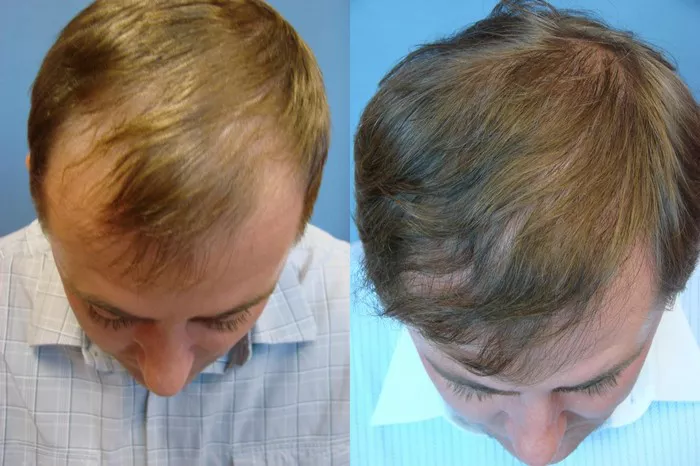Undergoing a hair transplant can be a life-changing decision for those experiencing hair loss. However, the recovery process is crucial to ensuring the success of the procedure. One often overlooked aspect is sleep. Proper sleep is essential for healing, but it also requires special considerations post-transplant. This article will provide a comprehensive guide on how to sleep after a hair transplant, addressing common concerns, best practices, and tips for a comfortable recovery.
Understanding the Hair Transplant Procedure
What Happens During a Hair Transplant?
A hair transplant involves relocating hair follicles from a donor area (typically the back of the scalp) to the balding or thinning areas. There are two primary techniques:
Follicular Unit Transplantation (FUT): This method involves removing a strip of scalp and dissecting it into individual follicular units for transplantation.
Follicular Unit Extraction (FUE): FUE extracts individual hair follicles directly from the donor area using a specialized tool, making it less invasive than FUT.
Both methods require careful post-operative care to ensure optimal results.
The Importance of Post-Operative Care
Following a hair transplant, your body undergoes a healing process. Proper care during this period, including how you sleep, is vital for the survival of the transplanted follicles and overall recovery. Sleep quality can impact inflammation, swelling, and even hair growth.
Why Sleep Position Matters After a Hair Transplant
Protecting the Transplanted Area
The first few days after the procedure are critical. The newly transplanted hair follicles are delicate and require protection. The position you sleep in can affect the healing process:
Avoid Direct Pressure: Sleeping on your stomach or side can place pressure on the transplanted area, potentially damaging the follicles.
Minimize Movement: Restless sleep can lead to unnecessary movement, risking dislodgment of the grafts.
Reducing Swelling
Proper sleep positioning can help minimize swelling, which is a common post-operative concern. Elevating your head can facilitate better blood circulation and reduce fluid accumulation.
Recommended Sleep Positions
1. Sleeping on Your Back
Elevated Position: Use pillows to elevate your head and shoulders. A recliner can be an excellent alternative for those who struggle to maintain an elevated position in bed.
Avoiding Movement: Back sleeping helps keep pressure off the transplanted area, reducing the risk of damage.
2. Use of Additional Pillows
Pillow Arrangement: Place additional pillows on either side of your body to create a supportive barrier, preventing you from rolling over during sleep.
Specialty Pillows: Consider using a travel neck pillow to support your neck while maintaining elevation.
3. Avoiding Side Sleeping
Risks of Side Sleeping: This position can place pressure directly on the transplant area, leading to dislodgment or irritation.
Training Yourself: If you typically sleep on your side, consider using a body pillow to discourage this position.
Practical Tips for Better Sleep After a Hair Transplant
1. Create a Comfortable Sleep Environment
Dark and Quiet: Ensure your sleeping area is dark and quiet to promote restful sleep. Consider using blackout curtains and white noise machines if necessary.
Comfortable Bedding: Use soft, breathable sheets and pillows to enhance comfort.
2. Follow a Sleep Schedule
Consistent Routine: Try to go to bed and wake up at the same time each day to regulate your body’s internal clock.
Limit Naps: While it may be tempting to nap throughout the day, try to limit daytime sleep to maintain a healthy night-time routine.
3. Stay Hydrated and Nourished
Hydration: Drink plenty of water to stay hydrated, but try to limit fluid intake right before bedtime to reduce nighttime bathroom trips.
Nutrition: Consume a balanced diet rich in vitamins and minerals to support healing. Foods high in protein, vitamin C, and omega-3 fatty acids can be particularly beneficial.
4. Manage Pain and Discomfort
Pain Management: Take any prescribed medications as directed to manage pain or discomfort. Avoid taking them too close to bedtime, as they may disrupt sleep.
Cold Compresses: Applying a cold compress to the forehead can alleviate swelling and discomfort, promoting better sleep.
5. Avoid Stimulants Before Bed
Limit Caffeine and Nicotine: Avoid consuming caffeine or nicotine in the hours leading up to bedtime, as they can interfere with your ability to fall asleep.
Screen Time: Reduce exposure to screens (phones, TVs, computers) before bed to help your body prepare for sleep.
What to Expect During the Healing Process
Initial Recovery Phase
First Few Days: Expect some swelling, redness, and minor discomfort around the transplant area. Elevating your head while sleeping can help mitigate these issues.
Sleep Disruption: It’s normal to experience interrupted sleep initially. Don’t be discouraged; it should improve as you heal.
Long-Term Care
Follow-Up Appointments: Attend follow-up visits with your surgeon to monitor the healing process and address any concerns.
Hair Growth Cycle: Understand that new hair growth may take several months, and patience is essential during this phase.
Signs You Should Contact Your Doctor
While some discomfort is expected after a hair transplant, certain symptoms may require medical attention:
Severe Pain: If you experience severe pain that is not alleviated by medication, contact your surgeon.
Excessive Swelling or Redness: Persistent swelling or redness around the transplant area may indicate an infection.
Discharge: Any unusual discharge from the surgical site should be evaluated by a medical professional.
Conclusion
Sleeping after a hair transplant requires careful attention to positioning and comfort to ensure successful recovery. By following the recommended sleep positions, creating a conducive sleep environment, and adhering to post-operative care guidelines, you can facilitate healing and promote optimal hair growth. Remember that recovery is a gradual process, and maintaining open communication with your healthcare provider will help you navigate this journey successfully. With proper care and patience, you can look forward to the results of your hair transplant and the confidence that comes with it.
Related topics:
- What to Expect 3 Months After a Hair Transplant: A Full Guide
- Does a Hair Transplant Work on a Bald Head? A Full Guide
- When Do Hairlines Start Receding? Understanding the Timeline


